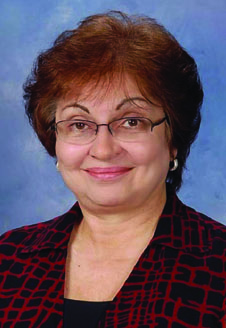By Sr. Mary Garascia, Ph.D.
 On the Sunday after Easter, April 19, our Gospel is the story of Thomas the Apostle, the skeptic who won’t believe in the Resurrection unless the Lord appears to him, and lets him put his hands into Jesus’ wounds. Wounds: why are they on the resurrected body of Jesus? Why does the Risen Christ appear wounded, instead of dressed in dazzling robes like in the Transfiguration account?
On the Sunday after Easter, April 19, our Gospel is the story of Thomas the Apostle, the skeptic who won’t believe in the Resurrection unless the Lord appears to him, and lets him put his hands into Jesus’ wounds. Wounds: why are they on the resurrected body of Jesus? Why does the Risen Christ appear wounded, instead of dressed in dazzling robes like in the Transfiguration account?
On Holy Thursday evening we pray in commemoration of the agony in the garden as Jesus begins his passion, arrested, scourged and crowned with thorns. But before this, Jesus of Nazareth already had wounds if he was truly human, and we believe he was. Life deals all of us wounds, hurts, even if our defense mechanisms keep us from acknowledging them. Some wounds objectively are huge, abuse for example. Some wounds are less huge. But I’ve noticed that it does not matter about the size. Pain is pain. Disaffirmation in childhood, being ostracized by peers, being despised or betrayed. Jesus did not live in a bubble. He was a working man. Some biblical scholars speculate that he worked as a carpenter in Sephoris, a Roman regional capital city under construction which was not far from Nazareth. They think that’s how he was so familiar with Roman centurions and merchants and tax collectors and Greek speaking people and other characters in our Gospel accounts. At any rate, as a true man, he couldn’t have emerged into his 30’s without being wounded. I expect he spoke from experience when he advised Peter to forgive “seventy times seven,” and that he drew from his experience of forgiving on the cross when he prayed, “Father, forgive them, they know not what they do.” I expect being rejected by his own Jewish people hurt, that the criticism he received from their officials hurt.
Becoming conscious of our wounds is essential in our journey to holiness. The thing about wounds is that they do not disappear, really, ever. Like the Risen Christ, we carry them always. If we are going to be loving and forgiving people as the Lord wants us to be, we need to find ways to work with our wounds, not to be hooked by them, not to be pushed into reacting because we are unaware of them. Our wounds make us who we are just as much as do our gifts and talents and successes in life. My personal image about all this is lace—a thing of beauty made up of holes that have been woven around. Whenever I feel angry or hurt, if I remember to take time to reflect, I find it is my wounds speaking. When I am not conscious, when I know not what I do, that is when I may act from my wounds by retorting, lashing out, becoming jealous, trying to get power over someone, to get even. The wonderful thing, though, is that as we go through life repeatedly reflecting on our wounds, we receive more enlightenment about ourselves, more understanding about our relationships with others, and the peace of Christ can enter our hearts. The Divine Mercy icon symbolizes this as light streams from the wounded hands of the Christ.
As we ponder the wounds of the crucified Christ, we must also reflect on the horrible nature of what happened to Him. In his crucifixion, the sins of the world are on display: the sins of a religious system protecting itself—Jesus kept challenging the rabbis, the Pharisees and Sadducees; the sins of a political system controlling a troublesome minority through military might and torture; the sins of an indifferent and fickle populace--probably bribed to demand Jesus’ crucifixion—choosing to get what it can instead of standing up for what is right. It is not only that we sin personally but that we sin as people, as members of groups of all kinds including races and nations. Hebrew scripture understood and repented about the sin of the people, but that appreciation of “people sin” was somewhat lost through the strong emphasis on individual or personal sin in Western Christianity. Recently we are beginning to understand how social sins—for example, violation of our environment, poverty produced by economic systems, racism and xenophobia—are holes or wounds in the world’s human culture by which we are all marked. By reflecting on these holes in our humanness together, reflecting and acting as a world community, light comes in.
The Risen Christ with his wounds is telling us that becoming divinized, becoming holy, is done with wounds intact, personal wounds and societal wounds. At the Easter Vigil we bless a new fire and sing “O happy fault,” with the Easter candle. For without our sins, born from our wounds, there would be no Christ. In our own time, perhaps Leonard Cohen says all this best:
Ring the bells that still can ring
Forget your perfect offering
There is a crack, a crack in everything
That’s how the light gets in. (Leonard Cohen, Anthem)
Sister Mary Garascia, PhD (Theology), is a member of the Sisters of the Precious Blood of Dayton Ohio, where she now resides. Until recently she lived and ministered at The Holy Name of Jesus in Redlands. You can follow her weekly Sunday scripture blogs at PreciousBloodSistersDayton.org.